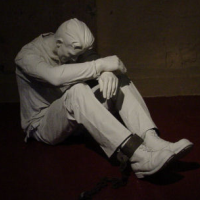California Prisons on Media Lockdown as Hunger Strike Enters Third Week

California prison officials say around 1,000 prisoners remain on a hunger strike in Week Three of a statewide protest over the use of extended solitary confinement, but those numbers can’t be verified by journalists, who have been denied access to the facilities.
“They just seem so paranoid to let any information out about what’s going on,” Jim Ewert of the California Newspaper Publishers Association told KPCC, a public radio station. KPCC was denied permission by the California Department of Corrections and Rehabilitation (CDCR) to tour any of the four state security housing units where prisoners are held in solitary.
When the strike began, 30,000 of the state’s 120,000 inmates were reportedly participating. Prisoners and their advocates complained that the 5,000 inmates serving indeterminate terms in isolation—for years at a time—were suffering what Amnesty International described as a “breach [of] international standards on humane treatment . . . that amounts to cruel, inhuman or degrading treatment, in violation of international law.”
The CDCR says the hunger strike was started by gang leaders to get them out of solitary confinement and back into the main prison population where they can wield more power inside and outside the penal system.
As of 2011, more than 500 prisoners serving indeterminate terms in isolation had spent at least 10 years doing so. More than 200 had been isolated for 15 years and 78 for 20 years. Many of those in isolation have been identified by corrections authorities as prison gang members, but the numbers are in dispute. A request by KPCC for updated numbers was denied by prison officials because they are the subject of lawsuits.
Last week, prison officials banned prominent inmate attorney Marilyn McMahon from talking to prisoners. The executive director of California Prison Focus said she was told that her access to inmates participating in the strike, as well as other inmates, had been cut off. McMahon, a member of the mediation team assembled to work as a go-between state corrections officials and protest leaders, and other prominent prison rights attorneys were similarly banned during a 2011 hunger strike.
“I am a target because I do help them communicate with the outside world,” McMahon said. “We are a way of prisoners breaking through the black box.” Another way of breaking through the black box is interaction with journalists. Governor Jerry Brown vetoed Assembly Bill 1270 last September, which would have given the media much more access to prisoners.
At one point, prison officials reportedly moved 14 prison leaders to more restricted housing and scooped up legal papers, at least temporarily, in the possession of inmates. That prompted Matt Guerrero of California Attorneys for Criminal Justice to complain that prisoners’ constitutional right to an attorney was being abridged.
–Ken Broder
To Learn More:
California Prison Officials Deny Media Access to Hunger Strikers (by Julie Small, KPCC)
Little Recourse for Attorney Barred from Visiting California Prisoners during Hunger Strike (by Julie Small, KPCC)
California Bans Inmates Rights Lawyer from Prisons (by Paige St. John, Los Angeles Times)
Inmate Hunger Strikers Claim Retaliation by Corrections Officials (by Sam Stanton, Sacramento Bee)
One in Four California Prisoners Join Hunger Strike (by Ken Broder, AllGov California)
- Top Stories
- Controversies
- Where is the Money Going?
- California and the Nation
- Appointments and Resignations
- Unusual News
- Latest News
- California Forbids U.S. Immigration Agents from Pretending to be Police
- California Lawmakers Urged to Strip “Self-Dealing” Tax Board of Its Duties
- Big Oil’s Grip on California
- Santa Cruz Police See Homeland Security Betrayal in Use of Gang Roundup as Cover for Immigration Raid
- Oil Companies Face Deadline to Stop Polluting California Groundwater





